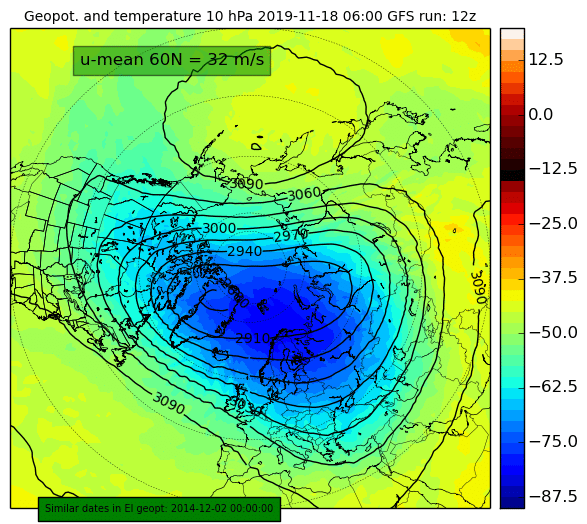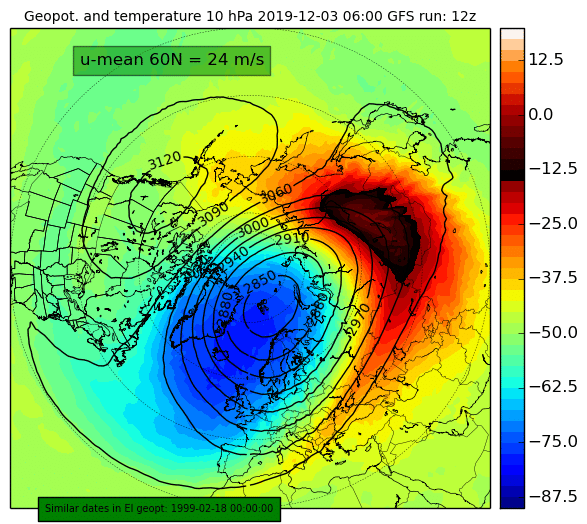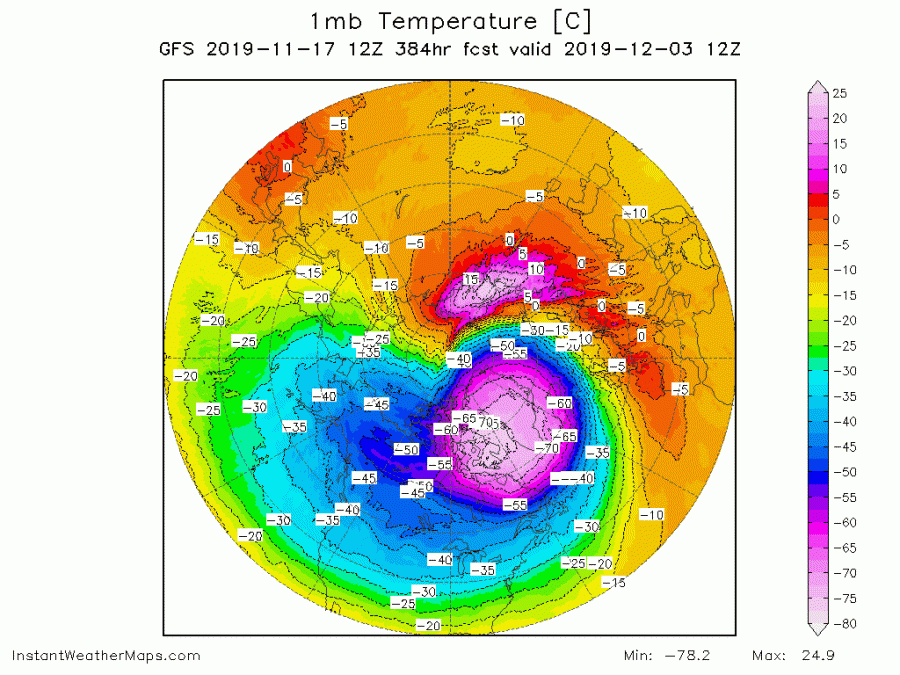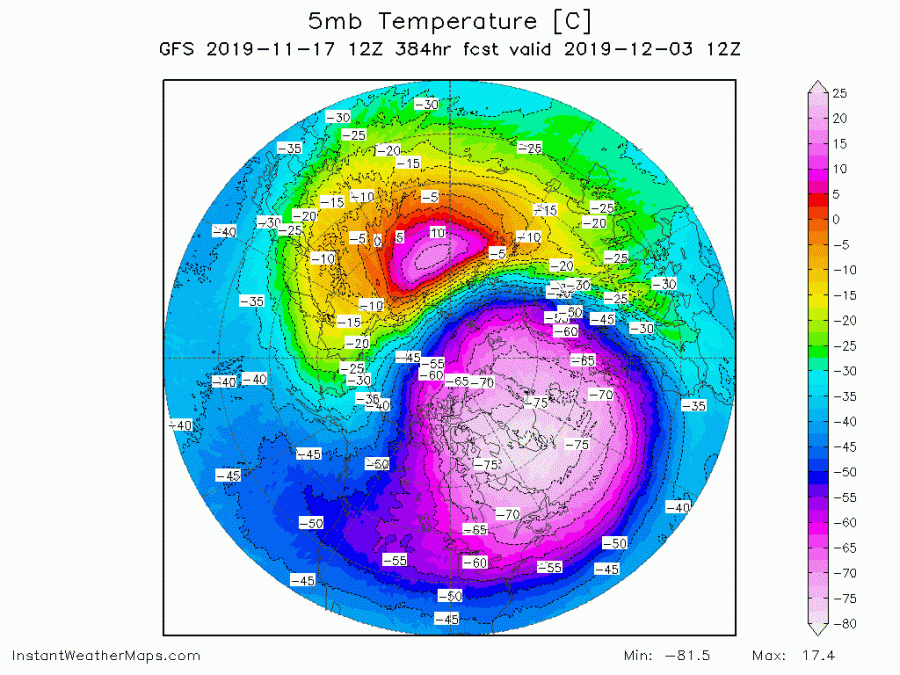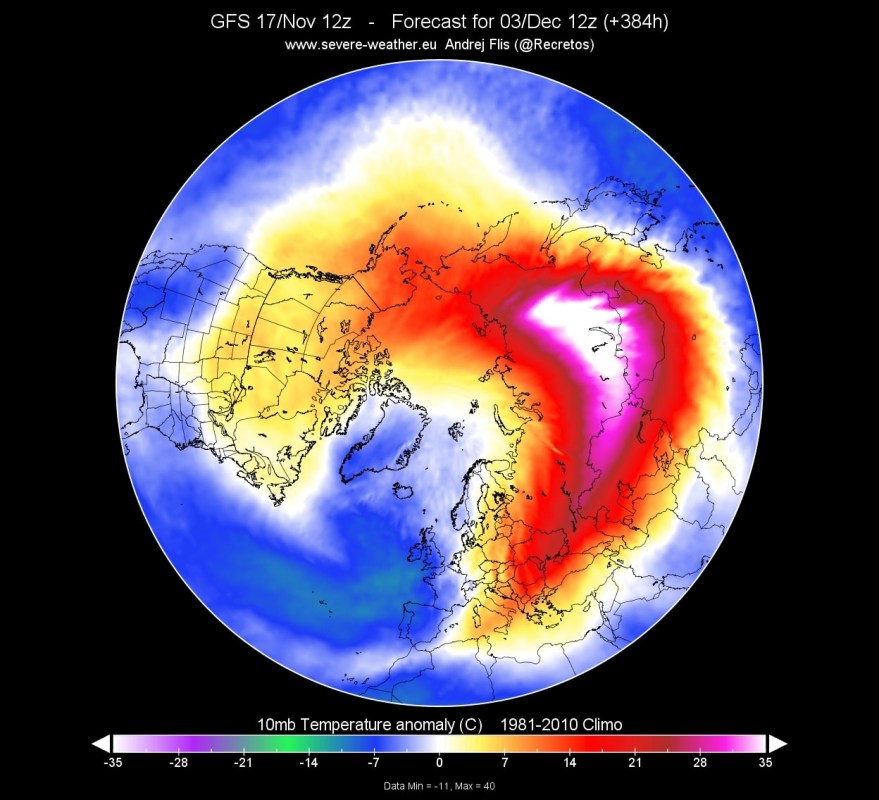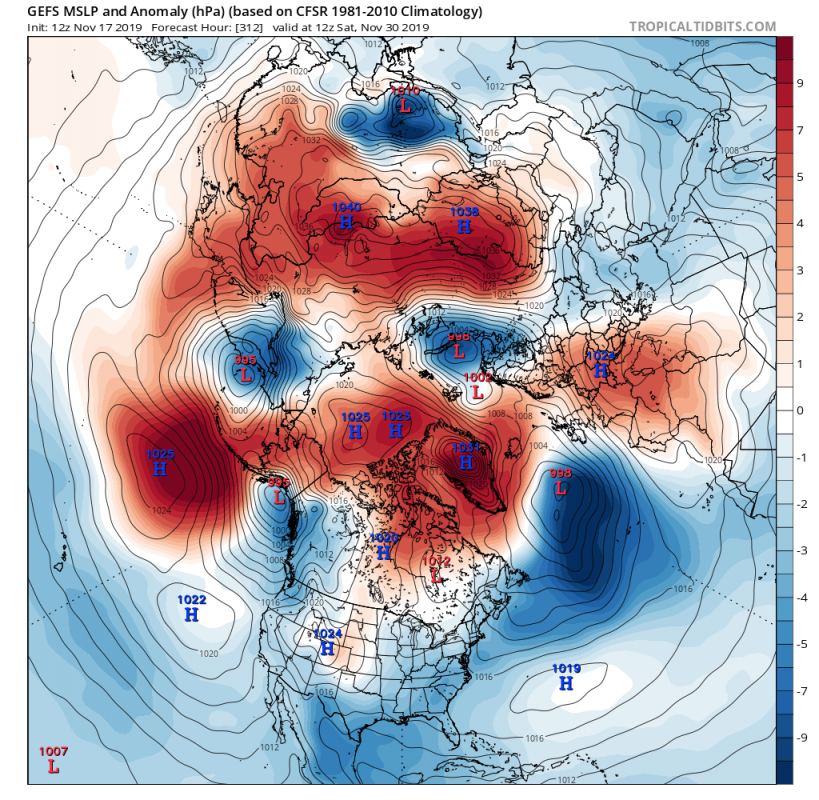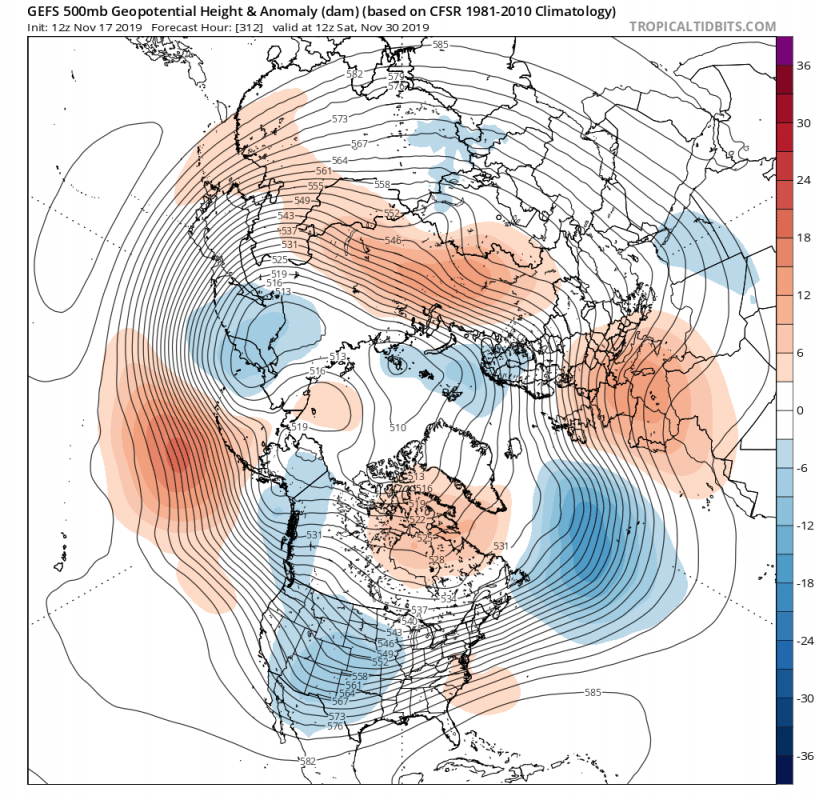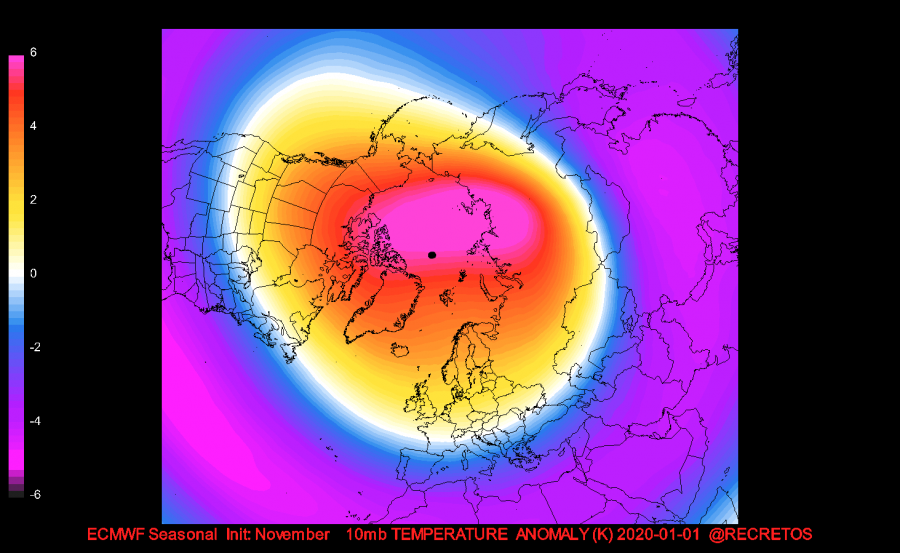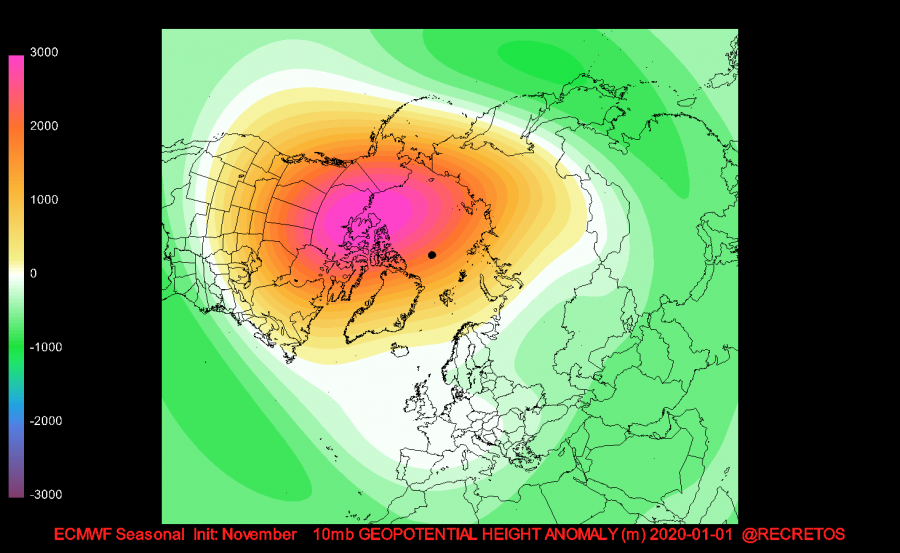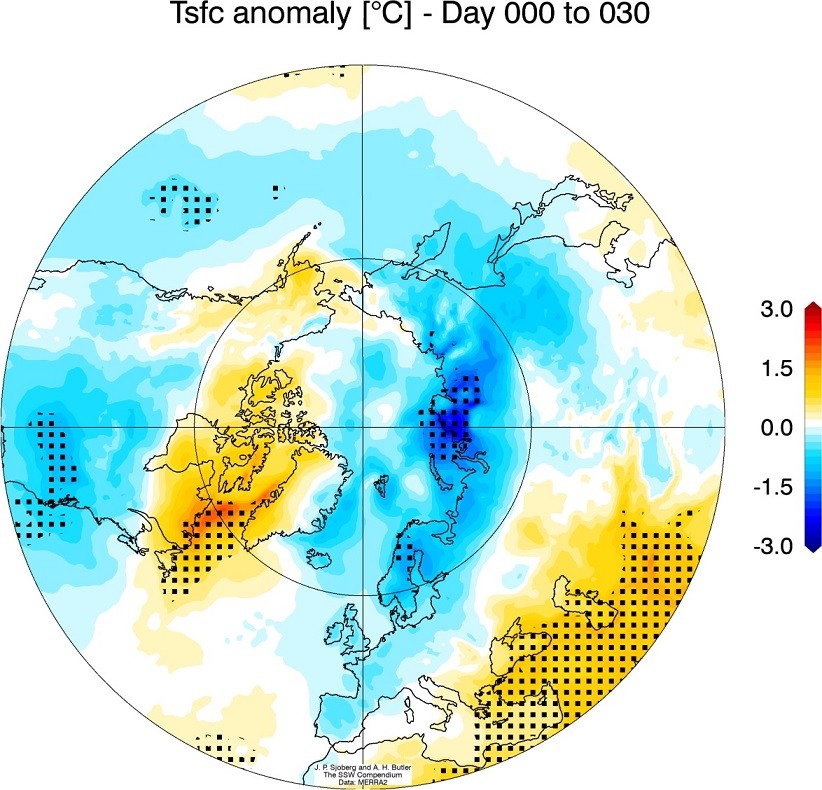The polar vortex is slowly but steadily losing its power. While the pressure waves are “attacking” the polar vortex, a new temperature wave is building for early December, that should prolong the weakening of the vortex, and perhaps push it even further beyond the point of return for a while, later in December.
In the past days, we wrote updates on the weakening of the stratospheric polar vortex, and the likely collapse in December. Currently, the polar vortex is under a wave-2 pattern attack, which is slowly receding, making way for a wave-1 pattern to take over. The number of the wave tells us how many “highs” are pressing against the polar vortex (low). On the images below (weatheriscool.com) we can see the current ongoing wave-1/2 pattern weakening the polar vortex. We can see the brief warming phase-1 by the 24th.
The 16-day ensemble forecast shows the strength of the polar night jet, weakening over time, taking a brief break around November 22nd. After that period, it starts to weaken again. The operational GFS model does not show a significant reduction of the stratospheric jet stream power. But that is perhaps weakening in disguise, due to the pressure waves contracting/compacting the polar vortex, causing a sharper pressure gradient around the latitude circle where the speed of the strato-jet stream is measured (60N). So while we see a steady strength of the strato-jet stream, it can then suddenly drop or even reverse, as the vortex is losing the battle versus the pressure/temperature waves.
By November 22nd, the wave 2 pattern will weaken. We will see a shift into a more wave-1 pattern look, where we have one dominant “high” pressing onto the polar vortex. By November 29th, a new warming phase-2 will start over Asia. It is forecast to escalate very fast, emerging much stronger than the previous phase. We forecasted additional warming phases, one week ago. The wave 1 pattern will strengthen, combined with the sharp rise in temperatures over Asia, and will slowly but steadily “eat” the vortex around its edges. Instead of a strengthening vortex, we will see a weakening vortex, which is not common for this time of year. A wave-2 pattern should slowly start to emerge again.
The warming in the stratosphere usually comes from the top down. Energy from the lower levels near the ground, is deflected upwards and reaches the top of the stratosphere. It is then amplified, releasing the themral energy, warming the upper stratospheric layers and slowly propagating downwards, embedding and weakening the polar vortex in the process. We can see on the images below, that temperatures higher in the stratosphere are actually forecast to be in the positive values, which is way above normal! 1mb level is around 45km altitude, while 5mb level is around 34km altitude.
The temperatures at the 10mb level (~30km altitude) are forecast to rise from -55°C to -10°C. That temperature at this level is over 30°C above the 30-year average!
What is driving these waves? The answer is perhaps not as simple as the question. But we can simplify by saying that the main energy comes from below. A dynamical weather pattern and strong pressure differences in the troposphere where our weather is. That can send waves of energy up into the stratosphere. We can see an example of a dynamic weather pattern on the two graphics below. They show the day-10 pressure anomaly forecast from EMCWF.
The latest monthly forecast from ECMWF shows strong positive anomalies for December/January. Instead of a cold and deep vortex, it actually hints at a weaker and warmer stratospheric circulation. That is a strong sign of a collapsed polar vortex, and high probability of a sudden stratospheric warming event by the end of the year.
What all this means for our weather? Well, a collapsed vortex always greatly increases the chances for winter weather towards Europe and CONUS. A lot depends on how the existing pressure pattern looks, while the effects from the stratosphere come crashing down on us. In some cases, the effects can be partially “deflected” and we don’t feel much of a change in our daily weather. But in most cases, the effects can have a major influence on the distribution of weather systems across the hemisphere. The graphical example below shows the average temperature anomaly 0-30 days after a major warming event. We can see the main cooling effects are across Eurasia and the United States.
We will keep you updated on any important further development, as this situation is just starting to unfold, with many weeks of monitoring and observing ahead!
A NEW UPDATE IS LIVE – INCLUDING A 3D ANALYSIS/FORECAST
But while you wait for more updates, make sure to check out the latest long-range winter forecasts, from various models around the world:
WINTER 2019/2020 MODEL FORECAST
Interested in our calendar? We are proud to present and promote the best weather photographers in Europe – see details:
